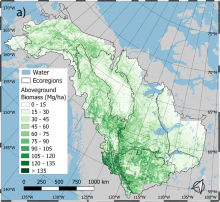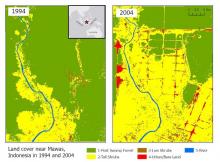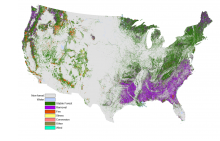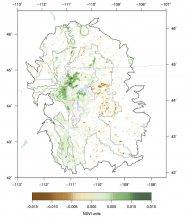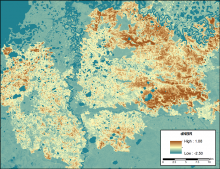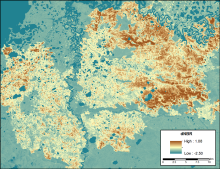Annual Aboveground Biomass for Boreal Forests of ABoVE Core Domain, 1984-2014
Spatial distribution of predicted aboveground biomass (AGB) density averaged over 1984-2014 for the ABoVE Core Study Domain. Ecoregions represent the EPA Level 2 Ecoregion boundaries. Source: Wang et al. (2021)

